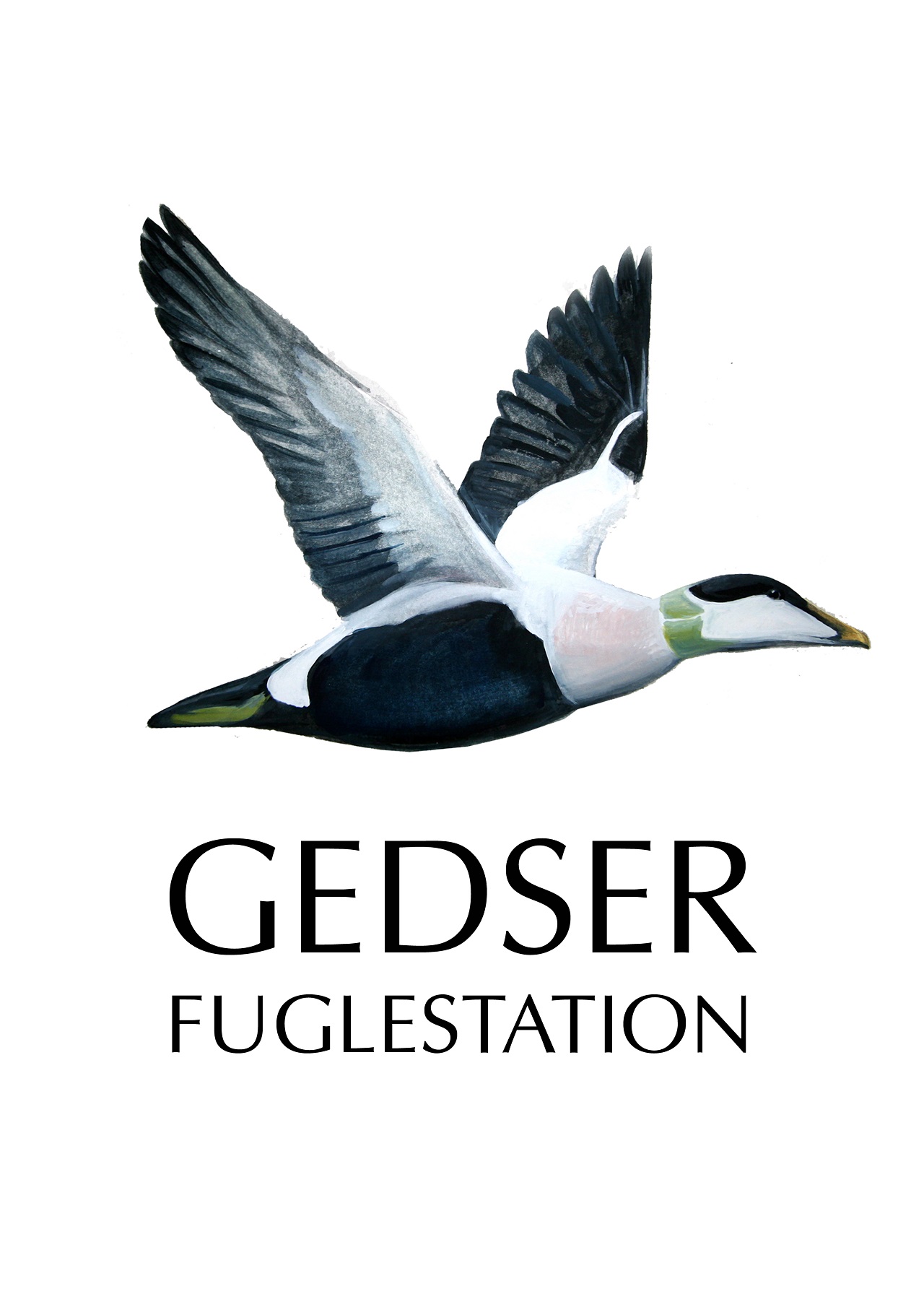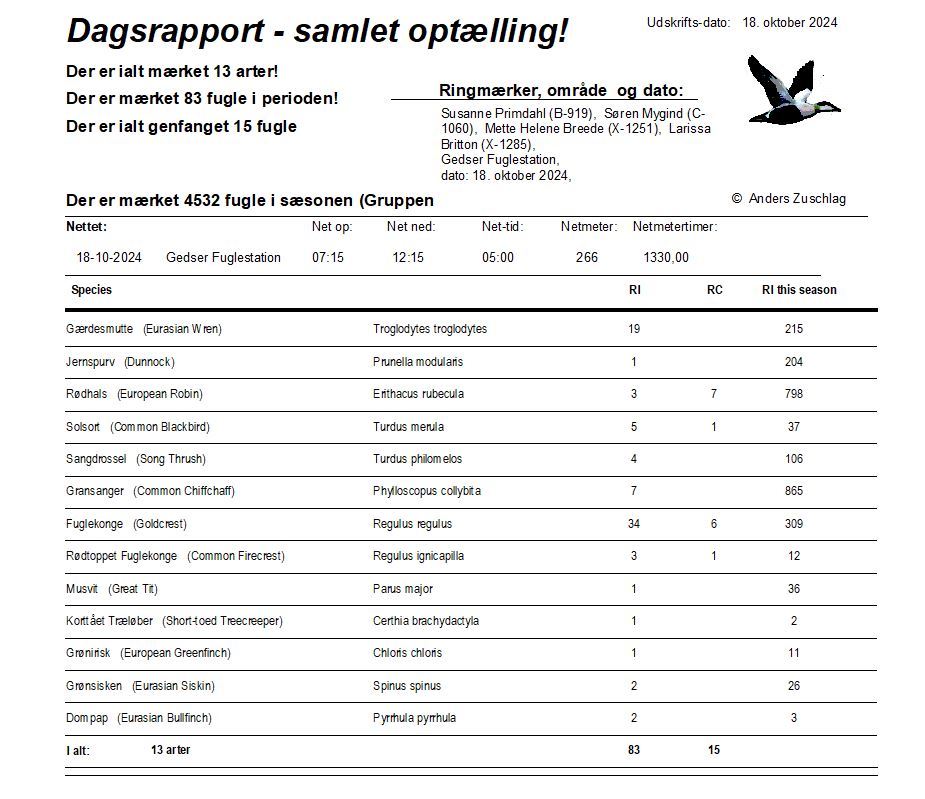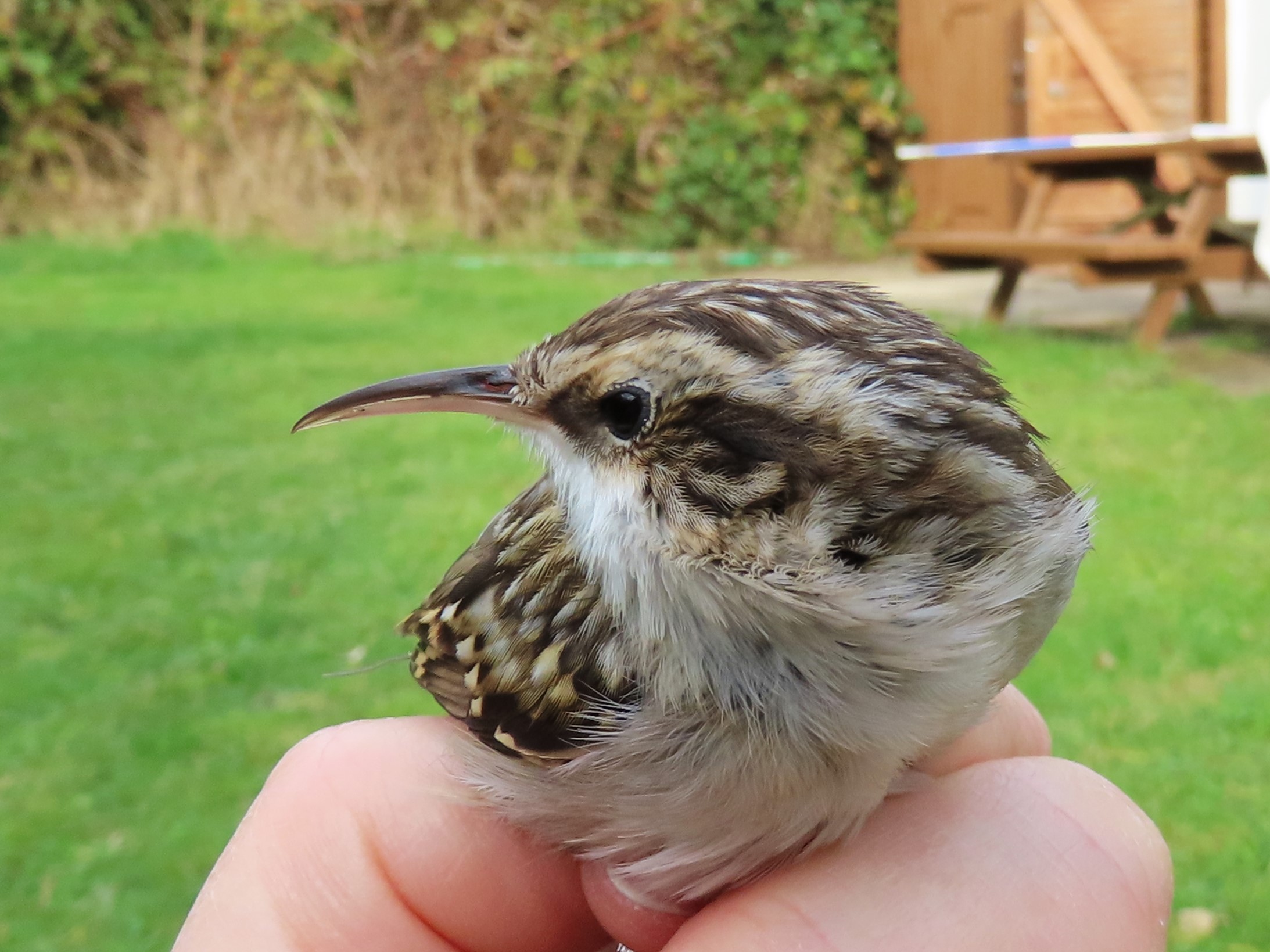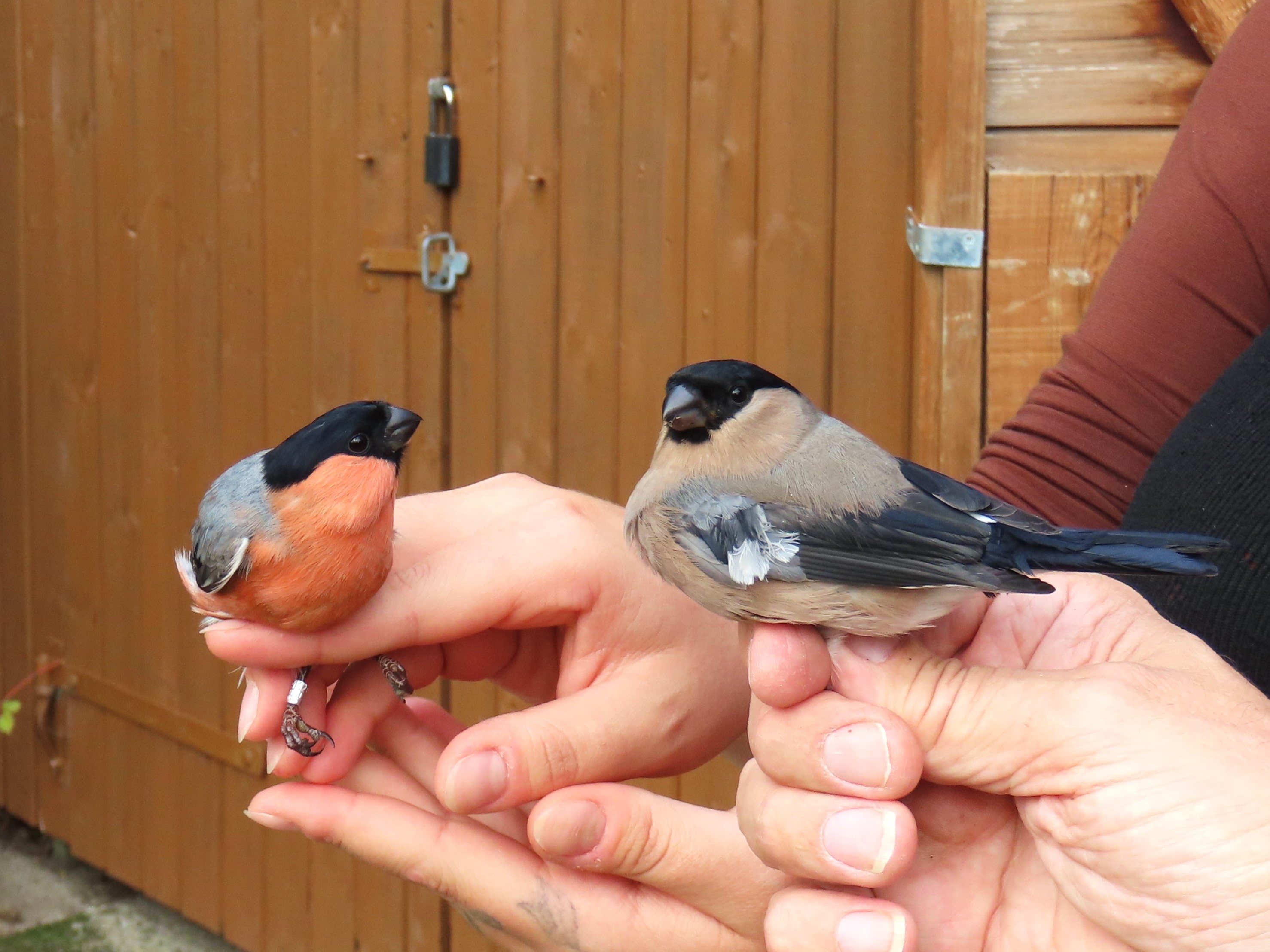Gedser Fuglestation Blog
Her på Gedser Fuglestations blog bringes korte nyheder i dagbogsformat om hændelser på fuglestationen.
Erfaringen udfordret
Ringmærkning:
Antallet af fugle der ringmærkes på Gedser Fuglesttion varierer meget fra dag til dag. Nogle dage er der således for få fugle til at holde tre til fire ringmærker beskæftiget medens der andre dag kan være rigtigt travlt. I dag var en meget fint afstemt dag for ringmærkerne hvor antallet af fugle gjorde, at der på den ene side var noget at lave dagen igennem samtidigt med, at der var tid til, en kop kaffe, og til at diskutere og lære hvordan forskellige arter bestemmes.
Ligesom ved feltornitologi er flere af de dragtkarakterer der omtales i litteraturen og som vi anvender til artsbestemmelsen subtile og variable. For rigtigt at kunne anvende dragtkaraktererne kræves der derfor en del erfaring, da det først er når man har set hvordan en dragtkarakter fremtræder på en levende fugl at den kan anvendes til artsbestemmelse.
Et eksempel herpå er den Korttåede træløber (Certhia brachydactyla) på billedet nedenfor. Er der tale om hvide striber i panden eller er der tale om lyst brunt farvede fjer? Er øjenbrynstriben tydelige foran øjet? Ved ringmærkning har vi dog også mulighed for at måle bl.a. næbbet og bagkloens længde og her viste målingerne at der var tale om en Korttået træløber.
Udover tid til at nørde bød dagen også på to flotte Dompapper (Pyrrhula pyrrhula). Ved at måle vingelængden kunne vi konstatere at der var tale om racen lille Dompap (Pyrrhula pyrrhula europaea).
Migration Count at Gedser Odde
by Lara W
Another exciting day at the point dawned, with light breezes bringing in much less action out to sea, but a good number of both raptors and passerines from further inland. A total of 7550 birds were counted migrating today, of 59 species – a much higher diversity than has been seen in a little while. Most numerous of the seabirds were 2144 Common Eider/Ederfugl (Somateria mollissima), of which a much higher proportion were female, to our great relief, given the noticeable lack of them throughout this year’s autumn migration so far. Although numbers were low for the following, Shoveler/Skeand (Anas clypeata), Pintail/Spidsand (Anas acuta), Tufted Duck/Troldand (Aythya fuligula), Velvet Scoter/Fløjlsand (Melannita fusca), Long-tailed duck/Havlit (Clangula hyemalis), and Goldeneye/Hvinand (Bucephala clangula) were all seen flying south, showing a good spread of species.
The wheat field behind the point was ploughed throughout the day, bringing all sorts of gulls in for a look at the newly overturned soil, including a couple of Caspian gull/Kaspisk Måge (Larus cachinnans) with their distinctive snowy-white heads. It was a perfect opportunity to watch typical avian behaviours unfold – simple foraging and preening, along with the occasional raucous disagreement, and playful interactions displayed through aerial acrobatics. The resident Hooded Crow/Gråkrage (Corvus cornix) which have grown in number day to day, had plentiful newcomers to harry across the area leading up to the point, including Sparrowhawk/Spurvehøg (Accipiter nisus), Common buzzard/Musvåge (Buteo buteo) and Rough-legged buzzard/Fjeldvåge (Buteo lagopus), along with the smaller Black-headed gull/Hættemåge (Chroicocephalus ridibundus). A total of 23 Rough-legged buzzard/Fjeldvåge, 4 Hen Harrier/Blå Kærhøg (Circus cyaneus), 38 Sparrowhawk and 1 Merlin/Dværgfalk (Falco columbarius) were recorded migrating, although many more were seen over the course of the day.

Migrating passerines were also fairly diverse, with 22 species recorded. Most numerous were Chaffinch/Bogfinke (Fringilla coelebs), at 1740 (with the odd Brambling/Kvækerfinke (Fringilla montifringilla) also present in mixed flocks), 1630 Siskin/Grønsisken (Spinus spinus), 350 Linnet/Tornirisk (Linaria cannabina), and 276 Starling/Stær (Sturnus vulgaris). In addition, we counted Woodlark/Hedelærke (Lullula arborea), Skylark/Sanglærke (Alauda arvensis), Dunnock/Jernspurv (Prunella modularis), Redwing/Vindrossel (Turdus iliacus), Twite/Bjergirisk (Linaria flavirostris), Bullfinch/Dompap (Pyrrhula pyrrhula), and two species of Crossbill/Korsnæb – both Red (Common)/Lille Korsnæb (Loxia curvirostra) and Parrot Crossbill/Stor Korsnæb (Loxia pytyopsittacus). Thanks to our sharp-eared passerine experts LAH and Ben Lisse for recording these! My own acoustic skills are sadly lacking, but closing my eyes and listening to the various calls and songs, chirps, trills and peeps, I do not need to know the names in order to feel a soft thrilling kind of happiness at the life evident all around.
Two moments stand out in particular. The first happened around midmorning, when a third-year Gannet/Sule (Morus bassanus) glided out onto the sea, flying teasingly close enough for a photograph before whipping away playfully with a dip of his wings. Sometime after his initial appearance, he demonstrated the perfectly executed dive this species is known for – crashing through the waves at breakneck speed – before emerging, this time unsuccessful, with a quick flick of his head and wings to shake off the excess moisture, and continuing on south. The wet-dog shake of seabirds never fails to amuse me, with different species enacting this behaviour in various displays of enthusiasm. Many of the larger gulls make quite a meal of it; make a point of taking a closer look next time you see a Herring gull/Sølvmåge (Larus argenteus) or Common gull/Stormmåge (Larus canus) emerging from a dive, it is guaranteed to bring a smile: elegance has to take a break sometime.
The second occasion was the appearance of a Great skua (Stercorarius skua) later in the afternoon, driving determinedly across the water south, a much smaller and daintier Arctic skua/Almindelig Kjove (Stercorarius parasiticus) frantically jabbing its wings through the air to keep up with his larger cousin. After the many smaller skuas we have had crossing the sea of late, the Great skua (known by the curious name “Bonxie” in my homeland) gives the impression of a bulldozer. Almost monstrously heavyset, this bird is in actual fact only roughly the size of a Herring gull/Sølvmåge, and weighs around 1.27-1.41kg in comparison to the Arctic skua’s 0.3-0.65kg. A robust and wide chest nevertheless tapers into the delicate pointed tail idiosyncratic to all skuas, although the bulky neck and thicker wings make this bird unmistakably different to others of its family. What a gorgeous beast!
See all observations from Friday at Gedser Odde in DOFbasen.
People at the observatory: Lara Winsloe, Larissa Britton, Susanne Primdahl, Rie Birkelund Elgaard Jensen, Søren Mygind, Ole Friis Larsen.





